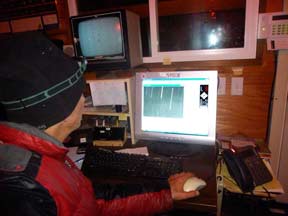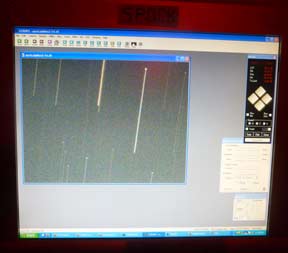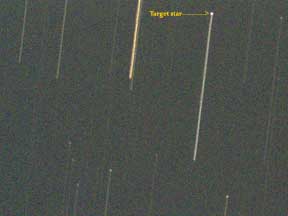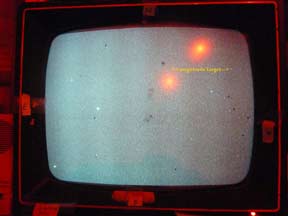Here's where all the magic happens! In front of our all-wonderful master computer - Spock - which controls the CCD camera, and the G11 telescope mount, all from the comforts of the "warm room" as we astronomers like to call it.
Here's the computer screen - CCDOPs controls the CCD camera and does the dark-subtract, flat-field, and color conversion of the raw image. A user-designed bit of software called Gemini.net is at upper right, and talks to the Gemini computer which is connected to the motors on the G11 mount.
A 60 second exposure begun at exactly 7:37:00 UT, and tracking shut off at exactly 7:37:05 UT, with the star trailing downward. Predicted 1.7 second event at 7:37:36 UT, about midway down the track here. No gap in the track = no occultation from here. Also a miss for nearby Derek Breit in Morgan Hill.



